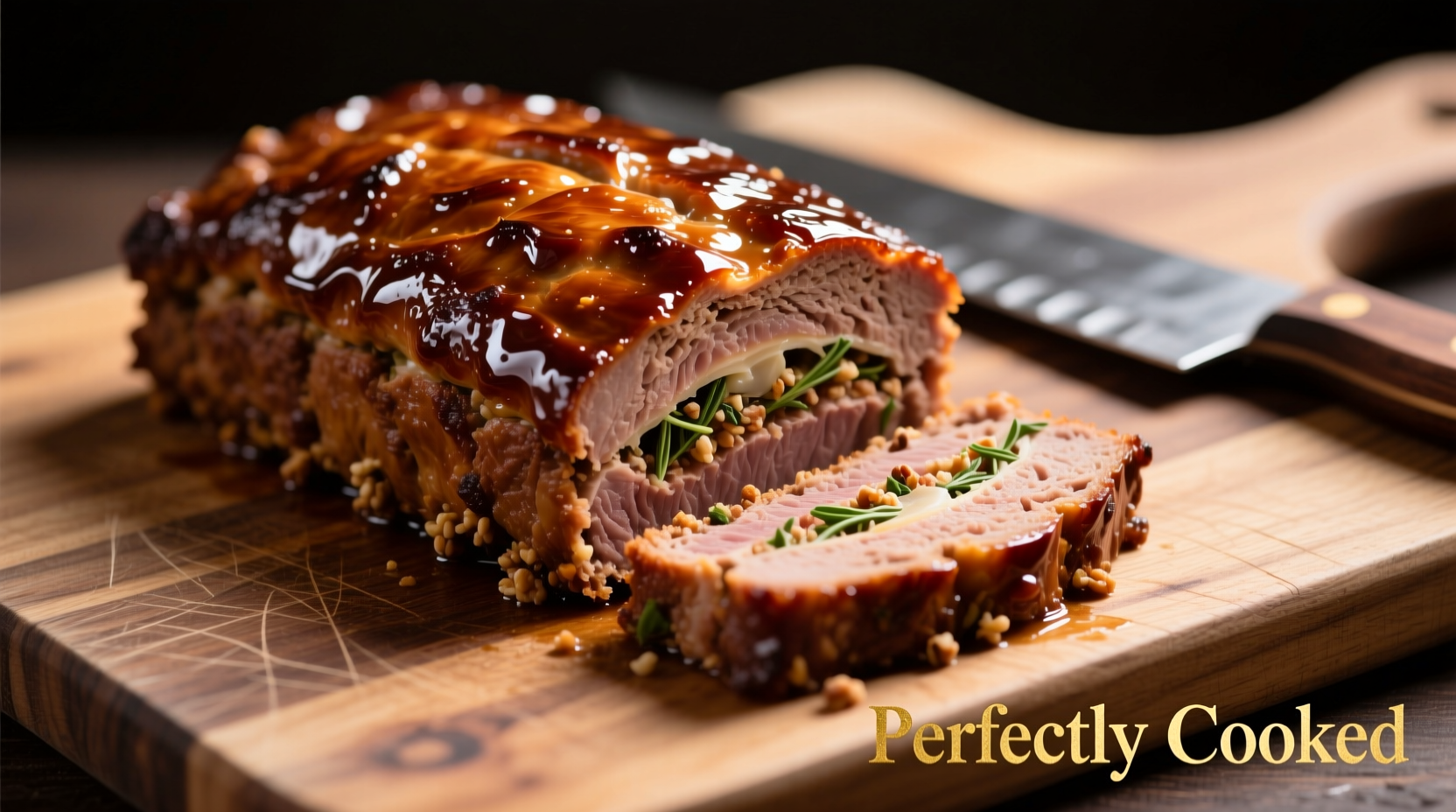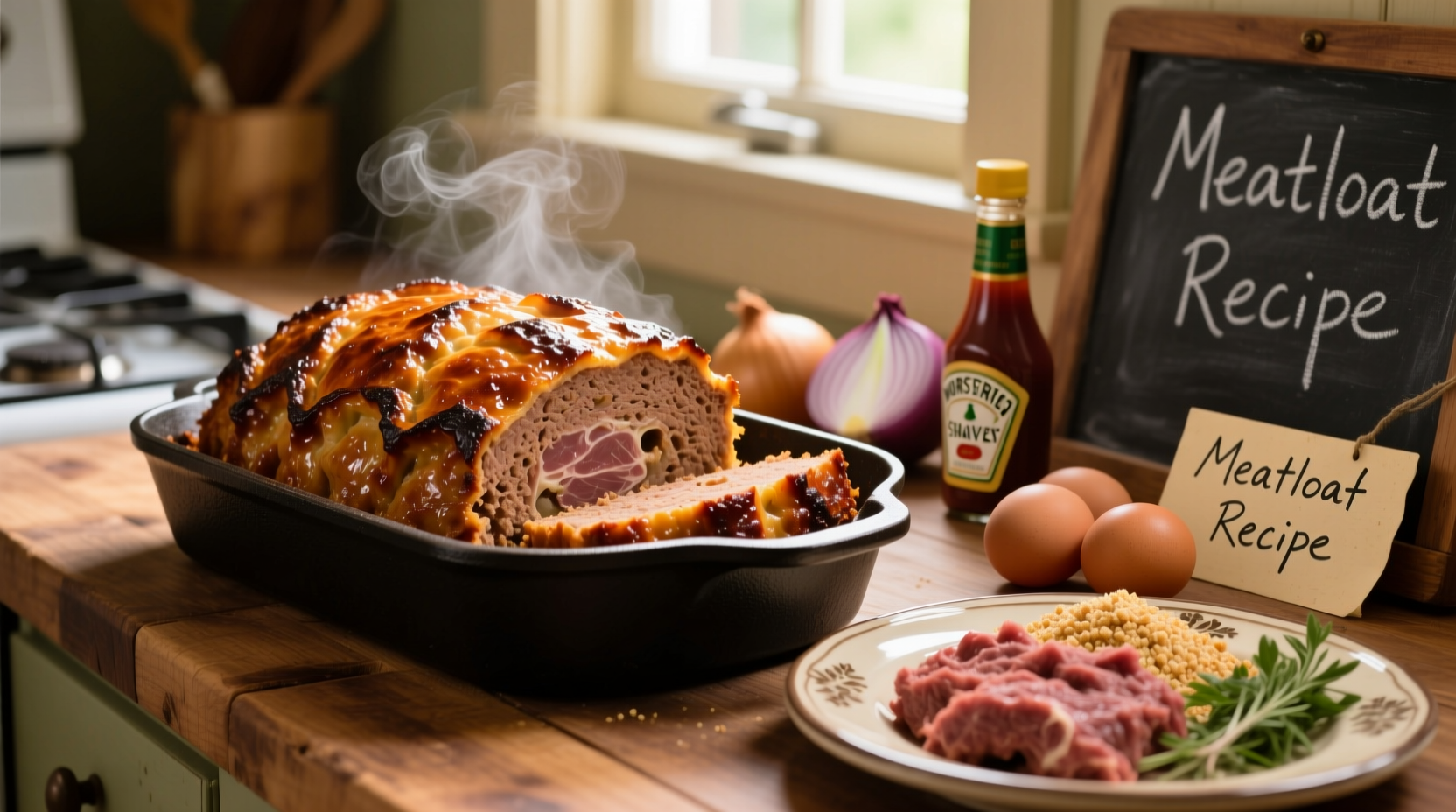Cook meatloaf at 350°F (175°C) for 50-60 minutes until internal temperature reaches 160°F (71°C). Let rest 10 minutes before slicing for perfect texture every time.
Nothing beats a classic oven-baked meatloaf with its savory aroma filling your kitchen. This guide delivers exactly what you need to create a moist, flavorful meatloaf that holds together perfectly—no more dry, crumbly disasters. Whether you're a beginner or looking to refine your technique, you'll discover professional insights most recipes miss.
Essential Ingredients for Perfect Meatloaf
Start with these foundational ingredients measured precisely for optimal texture and flavor balance. The right ratio of meat to binders makes all the difference between a falling-apart mess and a beautifully structured loaf.
| Ingredient | Classic Ratio | Texture Impact | Flavor Contribution |
|---|---|---|---|
| Ground Beef (80/20) | 1.5 lbs | Firm structure | Rich umami base |
| Panko Breadcrumbs | 1/2 cup | Moisture retention | Neutral carrier |
| Milk | 1/3 cup | Tenderizes | Subtle richness |
| Eggs | 2 large | Binds ingredients | Subtle richness |
According to USDA Food Safety guidelines, ground meats must reach 160°F (71°C) for safe consumption (USDA FSIS). This precise temperature ensures food safety without overcooking.
Your Meatloaf Equipment Checklist
Having the right tools streamlines your cooking process and improves results:
- 9x5 inch loaf pan (standard size for even cooking)
- Digital instant-read thermometer (critical for accuracy)
- Mixing bowl (glass or stainless steel)
- Meatloaf glaze brush (silicone preferred)
- Cooling rack (for proper air circulation after baking)
Step-by-Step Meatloaf Preparation
Follow these precise steps for restaurant-quality results:
1. Prepare Your Binder Mixture
Combine panko breadcrumbs and milk in a small bowl. Let sit for 5 minutes until breadcrumbs fully absorb the milk. This creates a moisture-rich binder that prevents dryness.
2. Mix Ingredients Gently
In a large bowl, combine ground beef, soaked breadcrumbs, eggs, finely diced vegetables, and seasonings. Use your hands to mix just until combined—never overmix. Overworking the meat creates a dense, tough texture as proteins develop excessively.
3. Shape Properly
Transfer mixture to your loaf pan, pressing gently to eliminate air pockets but maintaining loose structure. Create a slight indentation along the top center to prevent doming during cooking.

The Critical Baking Process
Temperature control separates good meatloaf from great meatloaf:
Oven Setup
Preheat to exactly 350°F (175°C). Position oven rack in the center for even heat distribution. Avoid opening the oven during the first 40 minutes to maintain consistent temperature.
Glazing Timing
Apply your glaze during the last 15-20 minutes of cooking. Applying too early causes burning; too late prevents proper caramelization. A classic ketchup-brown sugar-mustard blend works perfectly.
Testing for Doneness
Insert your thermometer into the center of the loaf. 160°F (71°C) is the magic number for safe, moist meatloaf. Remove from oven when thermometer reads 155°F (68°C)—it will continue cooking from residual heat.
Resting: The Secret Most Recipes Skip
Let your meatloaf rest on a cooling rack for 10 minutes before slicing. This crucial step allows proteins to relax and juices to redistribute. Cutting too soon releases all moisture onto your cutting board.
Avoid These Common Meatloaf Mistakes
Professional chefs consistently identify these pitfalls:
- Overmixing - Creates tough, dense texture
- Incorrect oven temperature - Too high causes exterior burning
- Slicing too soon - Releases precious juices
- Excessive liquid ingredients - Causes structural failure
- Skipping the thermometer - Guessing leads to dry or unsafe meat
Meatloaf Evolution Timeline
Understanding meatloaf's history reveals why certain techniques work best:
- 1870s - First published meatloaf recipes appeared in American cookbooks as frugal meals using leftover meats
- 1940s - Became popular during WWII rationing as meat extenders with breadcrumbs and vegetables
- 1950s - Standardized with canned tomato products as glazes and binders
- 2000s - Gourmet variations emerged with premium meats and artisanal ingredients
Source: American Food Roots historical documentation
Meatloaf Variations That Actually Work
Successful adaptations maintain structural integrity while adding flavor:
- Italian-style - Substitute breadcrumbs with crushed melba toast, add Parmesan and Italian herbs
- Southwest - Mix in roasted corn, black beans, and chipotle powder (reduce liquid ingredients)
- Game meat blend - Combine ground beef with venison or bison (add extra fat source)
Proper Storage and Reheating
Store leftovers properly to maintain quality:
- Cool completely before refrigerating (within 2 hours of cooking)
- Wrap tightly in parchment paper then foil
- Refrigerate up to 4 days or freeze up to 3 months
- Reheat slices covered with broth at 325°F until internal temperature reaches 140°F
Contextual Considerations for Meatloaf Success
Understanding these boundaries prevents recipe failures:
- High-altitude cooking - Increase temperature by 15-25°F and reduce baking time slightly
- Convection ovens - Reduce temperature by 25°F and check 10 minutes early
- Meat substitutions - Turkey/chicken requires additional fat (2-3 tbsp olive oil)
- Gluten-free needs - Use certified GF oats instead of breadcrumbs
Expert Meatloaf Troubleshooting
Solve these common issues with professional techniques:
- Falling apart - You likely overmixed or used too little binder. Next time, soak breadcrumbs in milk first.
- Dry texture - Temperature was too high or cooking time too long. Always use a thermometer.
- Soggy bottom - Place loaf pan on a preheated baking sheet to improve bottom crust.
- Burnt glaze - Apply glaze during last 15 minutes and tent with foil if browning too quickly.











 浙公网安备
33010002000092号
浙公网安备
33010002000092号 浙B2-20120091-4
浙B2-20120091-4